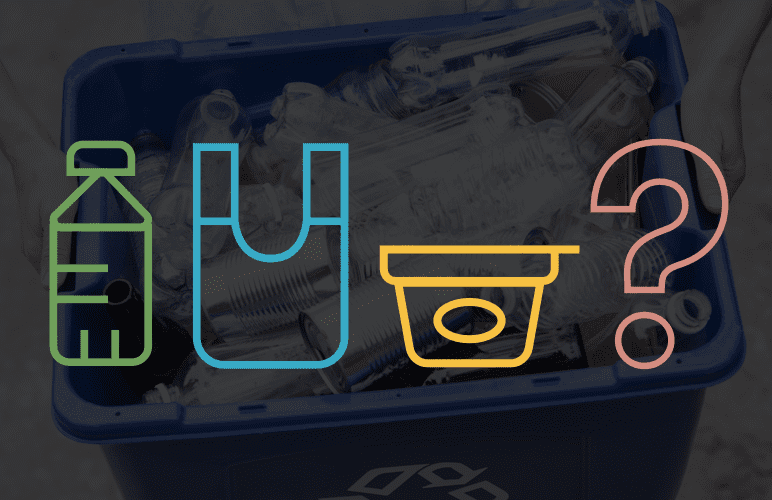We all know the bright blue bin with the chasing arrows. It’s almost everywhere, and we learn at an early age the importance of separating items – paper, glass, metal and plastic – for recycling from waste otherwise headed for the landfill.
Yet, even though recycling is part of our daily lives, we often find ourselves hovering over the bin asking: Can I recycle this? Unfortunately, this “bin-decision” often results in common items like plastic bags, milk jugs and water bottles being discarded instead of recycled to become new products.
What’s circularity?
Circularity is the ability to more efficiently use plastic (or any resource) by keeping material in use for as long as possible, getting the most we can from them during use, and then recovering them to make new products. By staying educated on what your community recycles, you can join the circularity movement and move from single use to reuse.

A Refresher: Ways to Recycle More Plastics
Don’t worry, you’re not alone in your confusion. Recycling confusion is so common that the U.S. Environmental Protection Agency says that even though nearly 75% of the waste in the United States is recyclable, we only recycle about 30% of it.
To help you play your part in circularity by recycling, here are some tips for how you can recycle even more plastic.
- What to do with plastic bottles
When it comes to plastic bottles – meaning the neck is skinnier than the body – recycling is easy. Whether large, small, wide or skinny, plastic bottles typically go into the recycling bin. - What’s the deal on plastic caps?
Recyclers usually want your bottle caps, but unless they’ve been twisted back onto a bottle, they can fall through spaces in recycling equipment. So before tossing into the blue bin, make sure caps are screwed on. It’s also important to squeeze the bottle or wash it to remove as much of the bottle’s original contents as possible. - Most plastic containers make the cut
Plastic containers and lids are a bit trickier. While bottles are usually collected for recycling, yogurt containers or butter tubs may or may not be collected in your local community. Find out how and what you can recycle at BeRecycled.org or contact your local recycling entity. - Recycle plastic bags while shopping
Plastic sandwich bags, produce bags, grocery bags and more flexible plastic products can get caught in the sorting equipment at recycling facilities, so they are not collected in most curbside collection programs. But thousands of grocery stores and retailers like Target, Walmart and Lowe’s will collect plastic bags and wraps for recycling. (Check for a bin at the store entrance.) Find a drop off location near you that will take them off your hands the next time you’re out shopping. - When in doubt, leave it out
The tips provided above should make recycling plastics a whole lot easier. But when you’re not sure whether you should recycle something, either check online to see what your community recycles or leave it out of the bin. Yes, there is a downside to guessing. Plastic items like old video cassette tapes, garden hoses, CDs and bowling balls do more than take up space. They can damage expensive recycling equipment or contaminate an otherwise valuable stream of recyclable material and make it unusable. - Skip the baggage
Contrary to popular belief, you should not bag up your recyclables before placing them in your blue bin. When plastic bags enter the recycling facility, they can shut down the sorting machines. So, skip the plastic garbage bag next time you recycle, and place your items loosely in the bin.

Did you know that shipping envelopes like this one can be recycled? Find a designated drop-off location near you.
Your Recycling Journey: What’s Next
Most Americans have access to a plastic recycling program. However, the rules around recycling can vary from place to place. To understand how to recycle plastics correctly, look for the How2Recycle label on plastic items in your home and follow the directions for how to recycle it properly.
By learning how to recycle properly according to your community’s program, you can contribute to circularity and recycle more plastics.
Continue to visit America’s Plastic Makers: Making Sustainable ChangeSM to learn more about how communities, companies, and brands are recycling and using recycled plastics.

